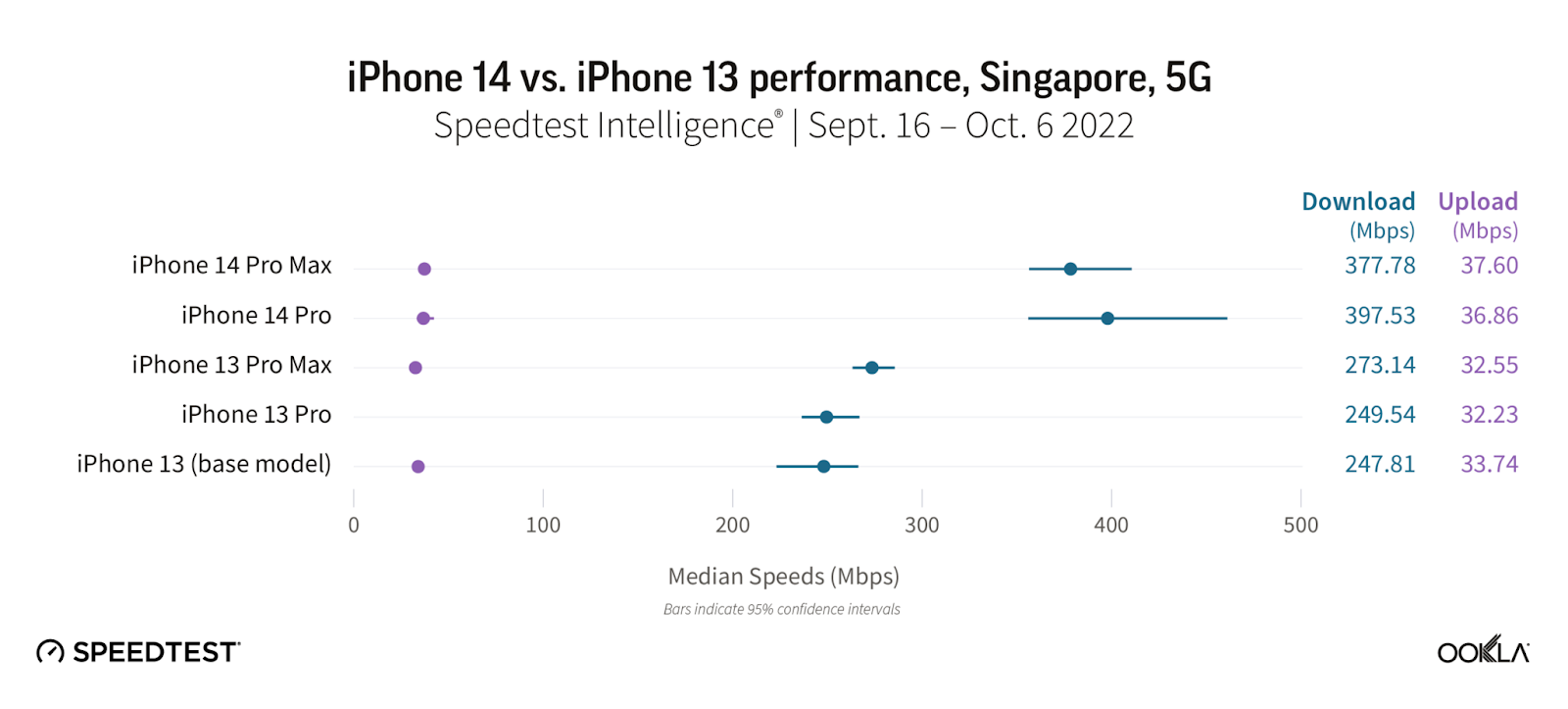It’s been just one month since we saw people going wild over the launch of the iPhone 14 lineup. There were several reports speaking about how the average download 5G speeds on the new devices were higher than that seen in its predecessor iPhone 13.
Some were witnessed quoting figures of 38% while others went up to 50% faster than that observed in the previous generation. But now, this news study by Ookla is again going through the experiment to determine how much greater the download speed is and the results were remarkable.
Think along the lines of improvements that went up to 40% and even more in terms of the iPhone 14 range across the US. But then one nation even went as far as seeing a boost of 130% in 5G speed for both iPhone 14 and its Pro Max variant.
After that, the figures for the mobile and fixed broadband findings were shared for Q3 and that’s when it was found how well the new iPhone lineup compared with leaders in the market. It’s safe to say that a mega 50% faster speed for downloads was witnessed by iPhone 14 Pro Max.
Today, we saw more details in this regard and how the iPhone 14 compared to the likes of the new Samsung Galaxy Z Fold 4. No surprises here as the iPhone 14 lineup all had much faster median speeds and scored a whopping 178 Mbps across the US. When we make comparisons by state, 150 Mbps was seen as compared to the 109.48 observed for iPhone 13. And that’s nearly 37% greater.
If we talk nation-wise, it was Brazil that really led the pack in this regard. This proved to be the biggest improvement for the new iPhone range where figures were recorded to be a staggering 130% greater than the iPhone 13 Pro Max.
If we talk about the greatest raw speed figures, that was seen in places like South Korea where the device 14 Pro blazed 663. And it’s also interesting to see this nation put up really fast 5G speeds on both variants of iPhones like the 13 and 14 range.
So what is the conclusion drawn regarding all of these figures? Well, iPhone 14 Pro reigns supreme and has allowed for much faster performance on cellular technology. This uses the X65 modem while the X60 seen on the iPhone 13 models was slower.
Read next: Apple’s Head For Software Engineering Calls iMessage For Android An Obstacle To Innovation
Some were witnessed quoting figures of 38% while others went up to 50% faster than that observed in the previous generation. But now, this news study by Ookla is again going through the experiment to determine how much greater the download speed is and the results were remarkable.
Think along the lines of improvements that went up to 40% and even more in terms of the iPhone 14 range across the US. But then one nation even went as far as seeing a boost of 130% in 5G speed for both iPhone 14 and its Pro Max variant.
After that, the figures for the mobile and fixed broadband findings were shared for Q3 and that’s when it was found how well the new iPhone lineup compared with leaders in the market. It’s safe to say that a mega 50% faster speed for downloads was witnessed by iPhone 14 Pro Max.
Today, we saw more details in this regard and how the iPhone 14 compared to the likes of the new Samsung Galaxy Z Fold 4. No surprises here as the iPhone 14 lineup all had much faster median speeds and scored a whopping 178 Mbps across the US. When we make comparisons by state, 150 Mbps was seen as compared to the 109.48 observed for iPhone 13. And that’s nearly 37% greater.
If we talk nation-wise, it was Brazil that really led the pack in this regard. This proved to be the biggest improvement for the new iPhone range where figures were recorded to be a staggering 130% greater than the iPhone 13 Pro Max.
If we talk about the greatest raw speed figures, that was seen in places like South Korea where the device 14 Pro blazed 663. And it’s also interesting to see this nation put up really fast 5G speeds on both variants of iPhones like the 13 and 14 range.
So what is the conclusion drawn regarding all of these figures? Well, iPhone 14 Pro reigns supreme and has allowed for much faster performance on cellular technology. This uses the X65 modem while the X60 seen on the iPhone 13 models was slower.
Read next: Apple’s Head For Software Engineering Calls iMessage For Android An Obstacle To Innovation








